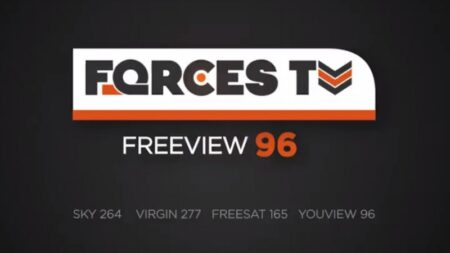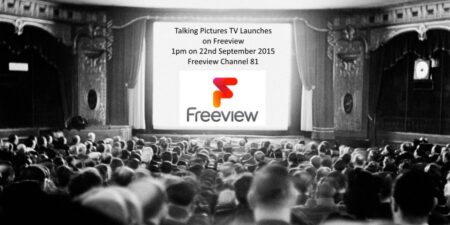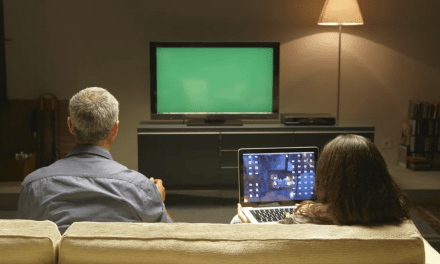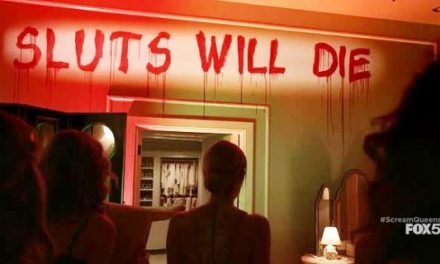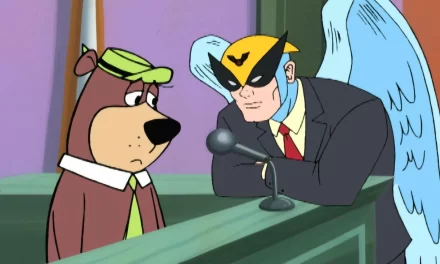My last contribution to CST focused on the CBS True Crime programme, Murder by The Sea (CBS, 2018- ). This was partly a result of my trawling through the variety of channels hosted by Freeview here in the UK. My intention, here, is partly to draw attention to Freeview, but also the many channels hosted by Freeview, and, to highlight channels that don’t always get scrutinised or discussed in terms of the changing landscape of television. This said, one particular channel on Freeview has recently become a talking point – Talking Pictures channel.
Freeview, according to its website, is “the biggest TV platform in the UK, used in 18 million homes and giving access to 95% of the nation’s most popular shows.”. It is the UK’s sole digital terrestrial television platform and is operated by DTV Services – a joint venture by the BBC, ITV, Channel 4, and Sky. Freeview is arguably a replacement for what was once the old terrestrial TV viewing experience – but with benefits. It is a service for those of us who either can’t afford subscription TV, or who simply don’t want subscription TV in the form of Virgin, Sky, and others.
Freeview was officially launched in 2002, when the BBC and Arqiva officially took over the digital terrestrial television (DTT) licences from the defunct ITV Digital. Freeview, as TV viewing model, has since been copied in Australia and New Zealand. The service provides all the five original terrestrial channels in the UK, plus a selection of digital channels. To date, Freeview has 85 TV channels which are offered to viewers across the UK, with some regional variations. For instance, one channel available to me is the Manchester TV channel, which belongs to the That’s TV Network, who operate via a number of local television licences. The dynamics and entity of Freeview in the vast media landscape deserves a paper on its own, but here, I will just provide an overview.
Apart from the five UK terrestrial channels Freeview also offer other channels which will be familiar to viewers, such as Film Four and Sony Movies, and the Yesterday channel, but some are the sort of channels that we, as TV-viewing audiences, often flick past. Some of these channels, and their presence in the flow and clutter of television are familiar, by sight, to most of us, but they rarely become an object of dedicated viewing or study, unless they appeal to some niche interest (as in my case with CBS True Crime). They are the wallpaper that surrounds the furniture of the TV viewing experience. They are the channels that bracket the actual channels we routinely and habitually go to. They operate in the background for most us, acting as a statistic that reassures us who have Freeview, that we have 82 channels available, even if we only routinely watch about 10.
I appreciate what I call the list of so-called niche channels, or the minor players in the TV landscape is mostly subjective, but some statistics bear my claims out, and some names will be familiar to most, others not so.
Available on Freeview are channels such as Sky Arts, Quest (Motoring programmes, Repair Shop, Shed and Buried, Outback Truckers, et al); The Really channel – owned by Discovery and described as “UKTV’s channel for female audiences” (Really?), and therefore offers a mixture of Lifestyle, medical, crime, and paranormal programmes… presumably because that is what female audiences want…
There is the 5USA channel, which seems only to show Murder She Wrote (Should be on Really channel); there is the Ideal World Channel – “The home of TV shopping”; Pick TV Channel – owned by Sky and which offers “instantly enjoyable television”, because clearly, Sky customers can’t just hang around waiting for enjoyable television to happen. Pick’s definition of enjoyable television comes in the form of a variety of Reality crime TV programmes, and what it calls “Blue Light documentaries” such as Police Force: Australia, and Border Security.
There’s the Beauty Channel, and the Style Channel, both of which are really shopping channels. In fact, many of the channels available are secretly shopping channels that occasionally throw in the odd documentary to show variety, and to alleviate the grind of retail therapy. Some channels have an identity crisis. Take the Together TV channel. This is a channel that is described as “The social change broadcaster”, a “supporter-owned TV channel” that targets “a women’s audience aged 40 to 60 with programming related to health and wellness, hobbies, and creativity”. When I looked at its listings for one Tuesday morning it revealed 4 hours of teleshopping, followed by Leaders of WWII. Similarly, Forces TV, as well as providing news on the armed forces, has recently been showing re-runs of Blake’s 7, alongside the 70s sitcom Bless This House. The Guardian describes this channel as providing “a strange combination”; a channel pitched primarily at veterans of the armed services with news and commemorations of past conflicts – hence Bless This House and Blake’s 7.
There are many more similar channels on Freeview, whose obscurity and therefore lack of a dedicated audience, contribute to the sort of programming they provide. Channels such as Forces TV and The Together Channel face the same problem of providing programming that not only fits their self-declared remit but allows them to broadcast at least 12 hours a day – an important condition of their broadcasting licence. As such, programming on these channels often requires leaps of the imagination.
Channels such as these have to buy programming and the licences for the various programmes they provide. As such, when channels do acquire the rights to show certain shows, they will often try and get their money’s worth, and this means repeating these shows again and again as if on a loop. The Horror Channel, for instance, and based on personal experience, repeatedly showed the original Star Trek series at various points in the week over a period of 12 months. Some programmes and licences are more expensive to acquire than others. Some are more available than others.
Talking Pictures.
One channel, however, has taken advantage of these dynamics and in a way that has brought them much attention over the pandemic. Talking Pictures channel is a channel that is literally run from a garden shed in Hertfordshire. Run by a father and daughter team – Noel Cronin, his daughter Sarah and son-in-law Neill – Talking Pictures TV primarily showcases black and white British films, and old TV classics and documentaries. The Cronins are a family that’s worked in film distribution for years, so they know the ins and outs of buying licenses. Whilst the technical work is carried out by specialists, everything else is done by them. Although often described as a channel that reaches for the nostalgia market, it is a bit more interesting than that, and its remit and business model provides a glimpse into the dynamics of recent TV broadcasting where smaller channels are concerned.
As Sarah Phillips observes for Film Stories magazine (2020), Talking Pictures offers films that have rarely been shown on the bigger film channels. “Over four years since its launch in 2015, it’s become one of the biggest film channels in the UK. Today, it attracts an audience of over two million viewers a week.”. The Cronins know how to operate. For instance, Films and TV programmes are always bought as part of a package from places like the BBC and Fremantle. “A single package can cost £200,000 or more.” (Phillips, 2020). Noel Cronin says that choosing what to buy is “based on suitability for the channel and then price”. They’re always thinking ahead and try to refresh their titles regularly so viewers only see the same films about three times a year.
Neil Cronin (father/Creator) has form where programming and licences are concerned. As Phillips observes, “Over 20 years ago”, Cronin set up Renown Pictures to buy as many older British films as possible. He then distributed their rights to terrestrial channels. When those channels started losing interest, he set up Talking Pictures TV. Talking Pictures TV launched in 2015 on Sky. The Cronins had no budget for advertising, so they used social media to get more publicity and gained traction in early morning slots when most channels were still showing teleshopping. Eventually, managed to get it listed on Freeview. Every day, the channel also shows a variety of vintage British TV shows. Some of these TV shows are rarities and have not been shown since their original broadcast. For instance, the channel has recently broadcast reruns of the TV show Sunday Night at the London Palladium, from 1955 onwards, which has attracted a lot of attention from TV historians. In an article for The Guardian (‘Inside Talking Pictures’, 2020), television reporter Jude Rogers describes the channel as “the anti-Netflix” and mentions how the channel has exploited changes in mainstream programming. Talking Picture’s Neil Cronin observes how mainstream channels such as the BBC have stopped showing old classics. Instead, he argues, “The BBC and ITV went for cheap programming instead. All that awful ‘buy a house, bake a cake, weed your window box’ stuff. A film has always had more worth than that.”.
This is what is significant about Talking Pictures. They have observed current trends in TV and exploited the gaps. They have acquired licenses and programming that had all but been forgotten, and therefore were inexpensive to acquire (they recently acquired Thames Television’s Quatermass, 1979), and they have shown intelligence in limiting the number of times these programmes are repeated. It also constantly expands its programming providing a full day’s programming of TV. As The Guardian argue, “There is nothing ostentatious or big-budget about Talking Pictures.”, and perhaps that is its appeal.
Kenneth A Longden is a Lecturer in Television, Film and Media, University of Salford, and a Fellow HEA.



